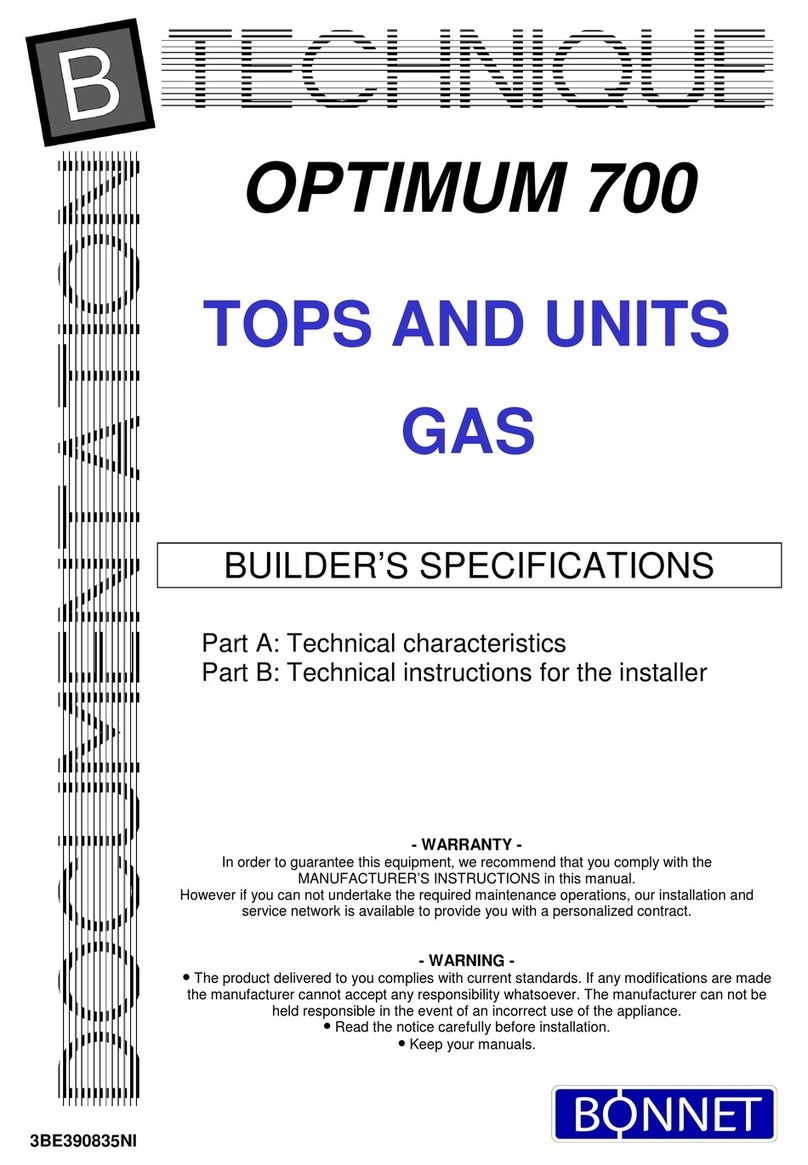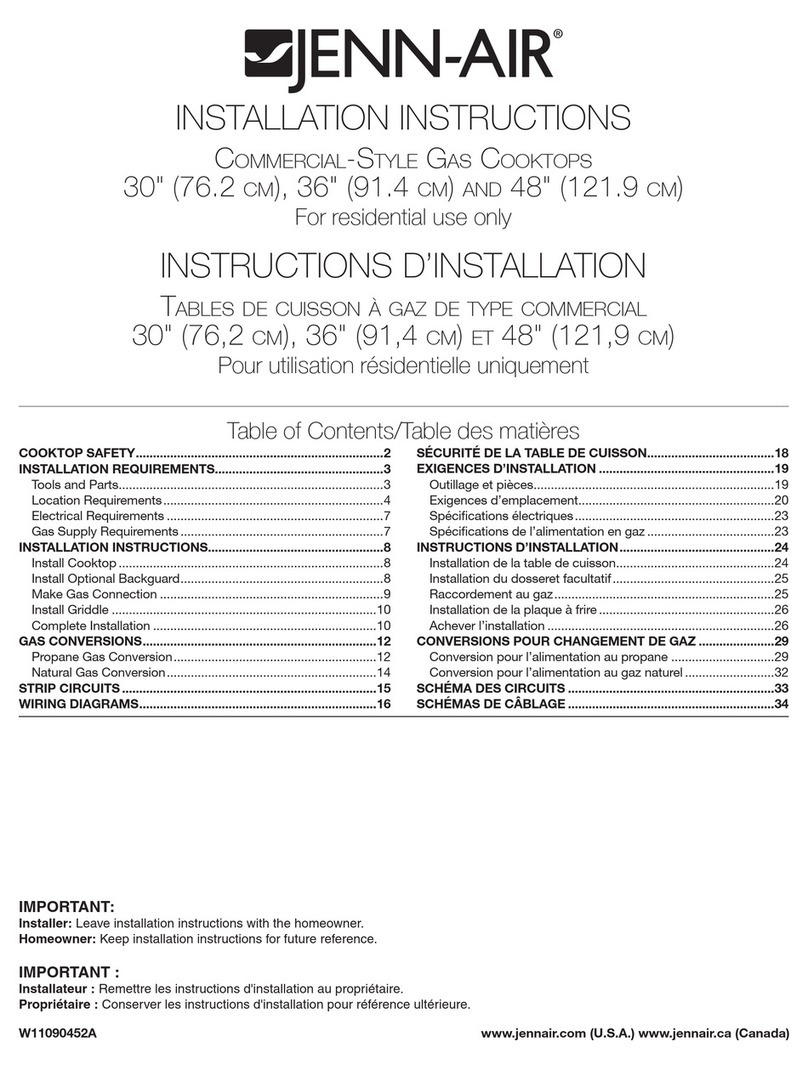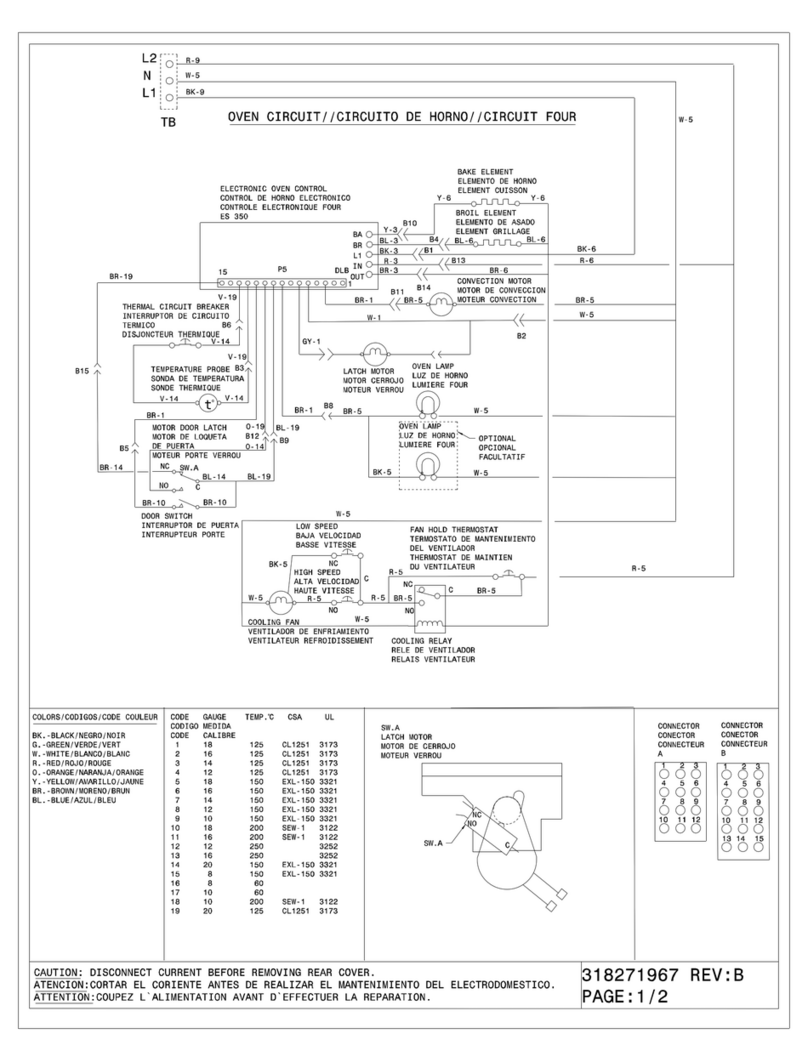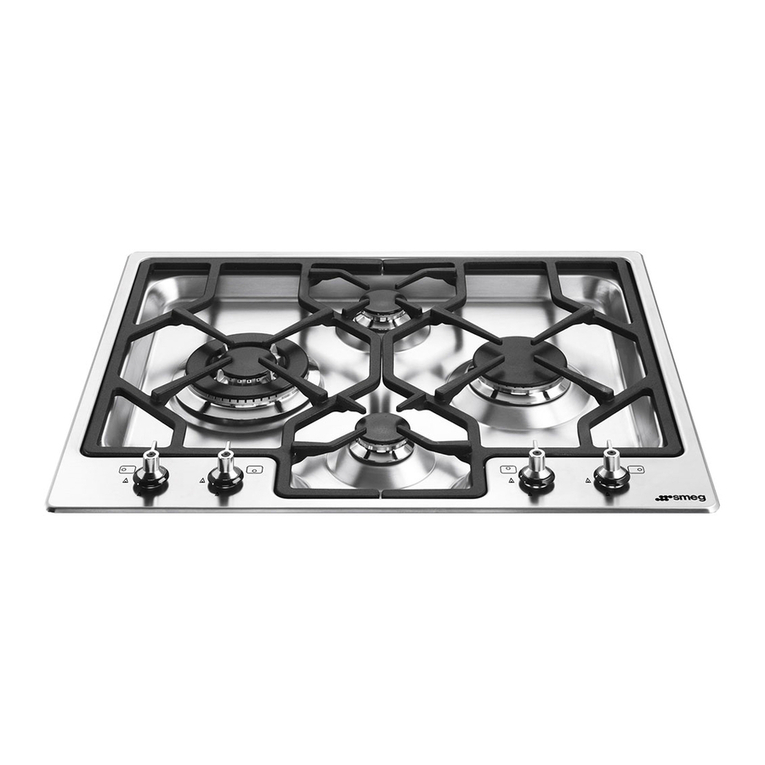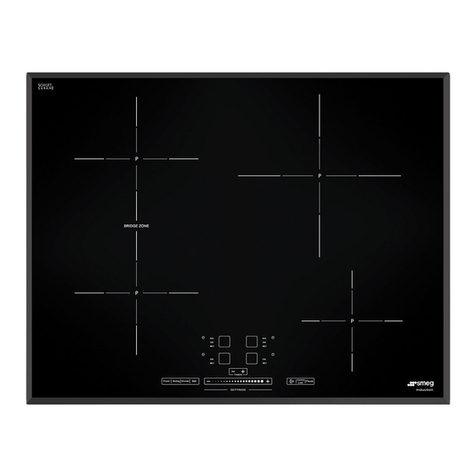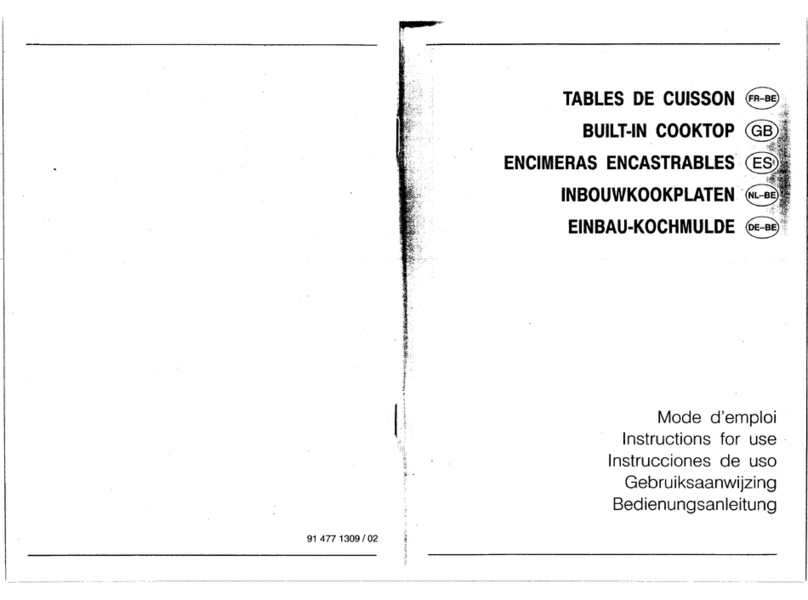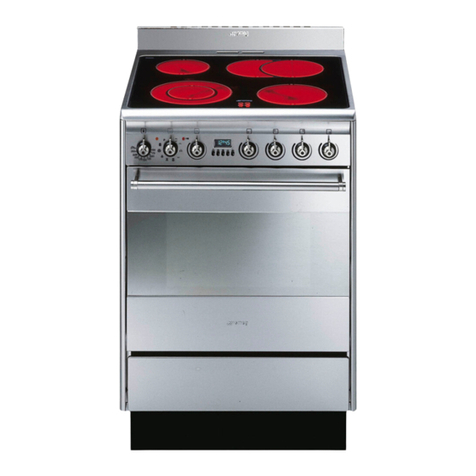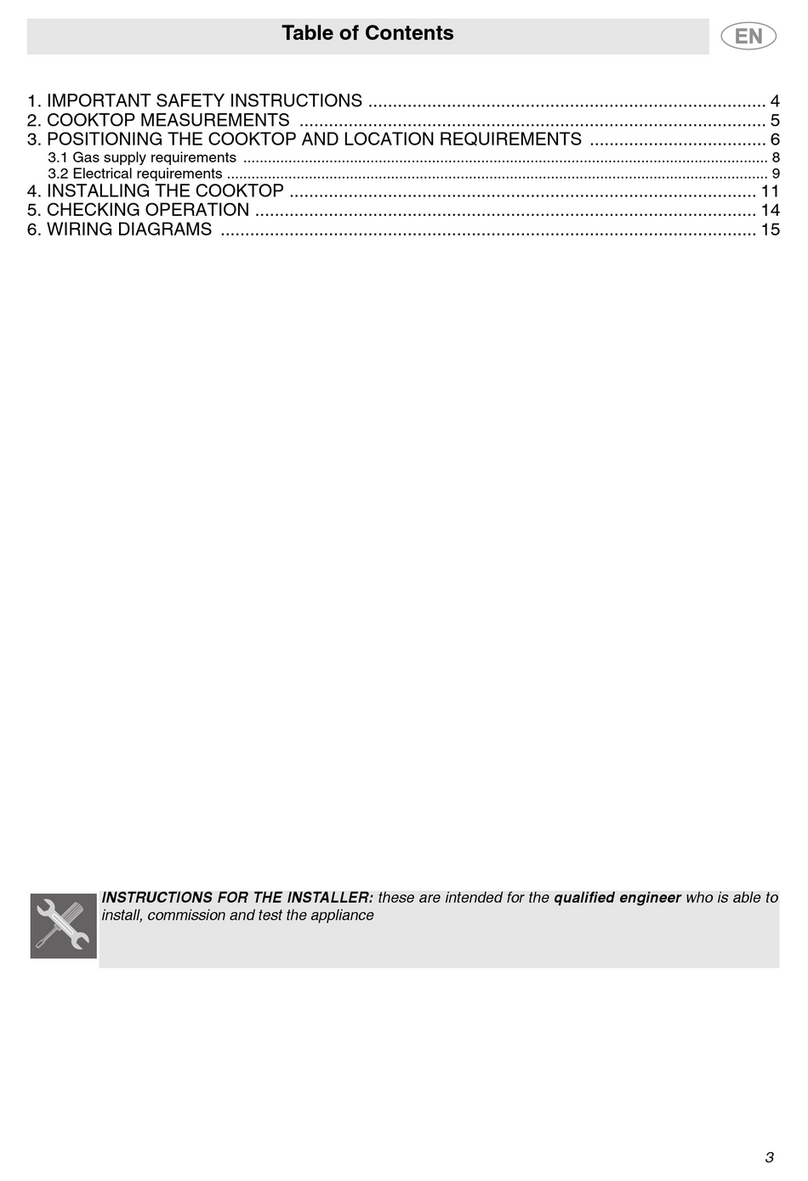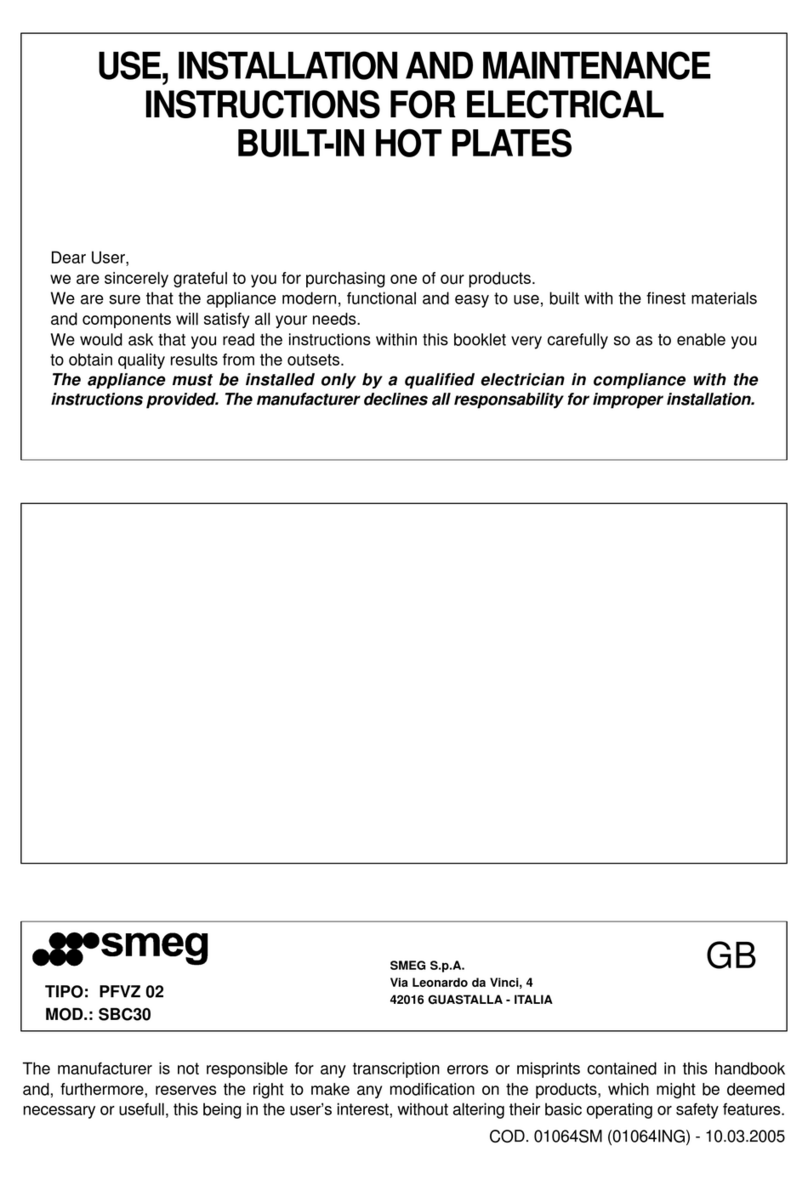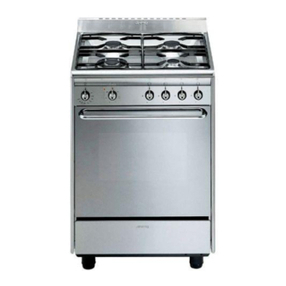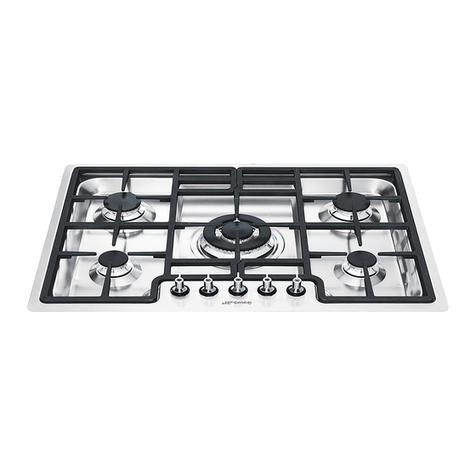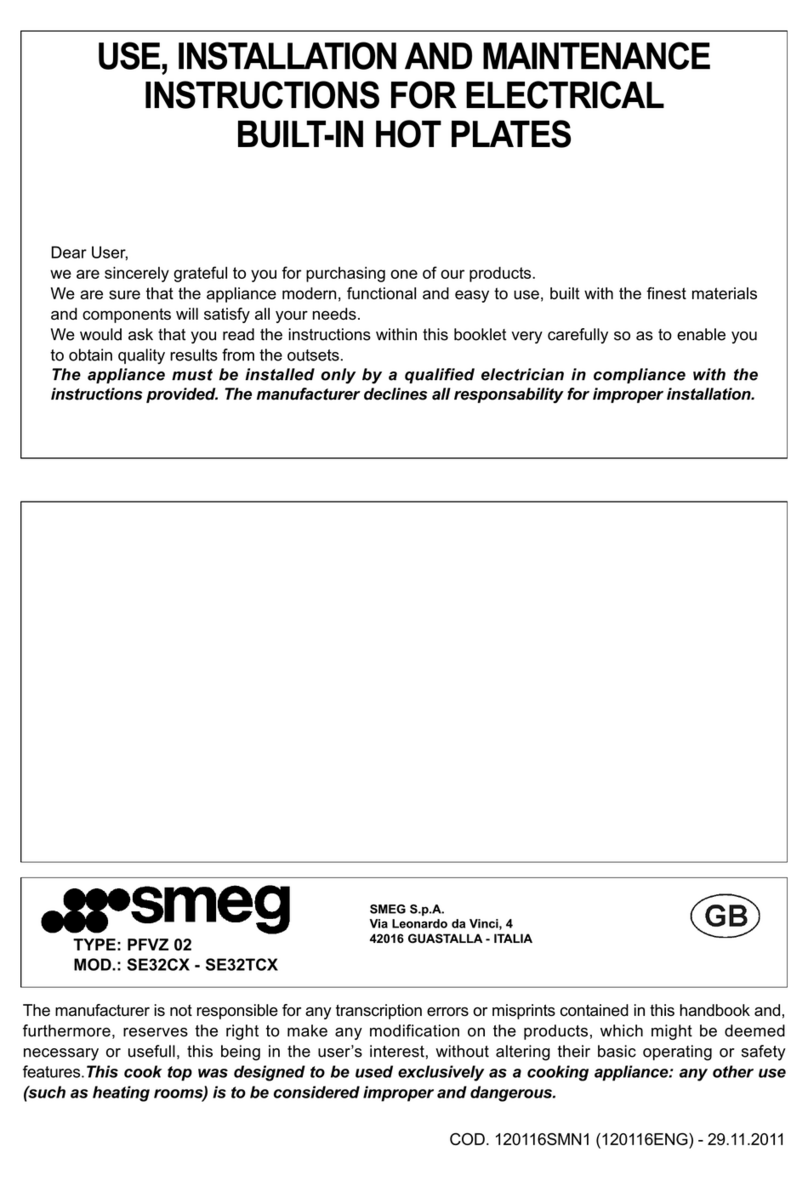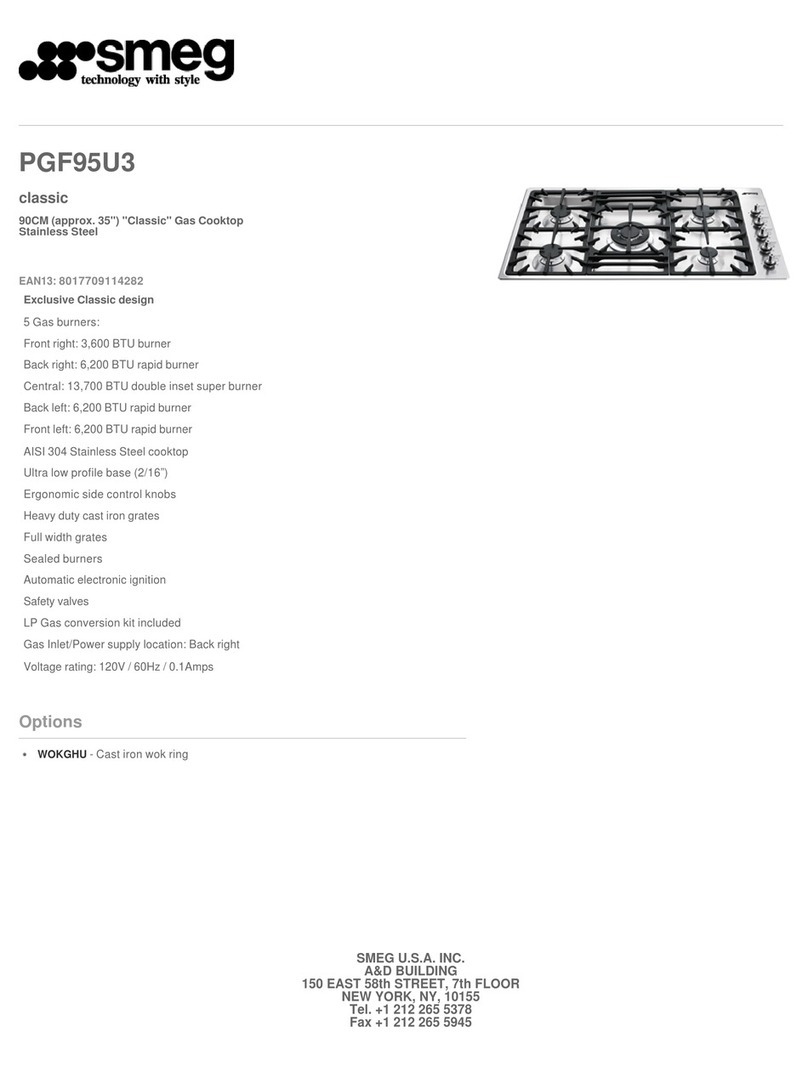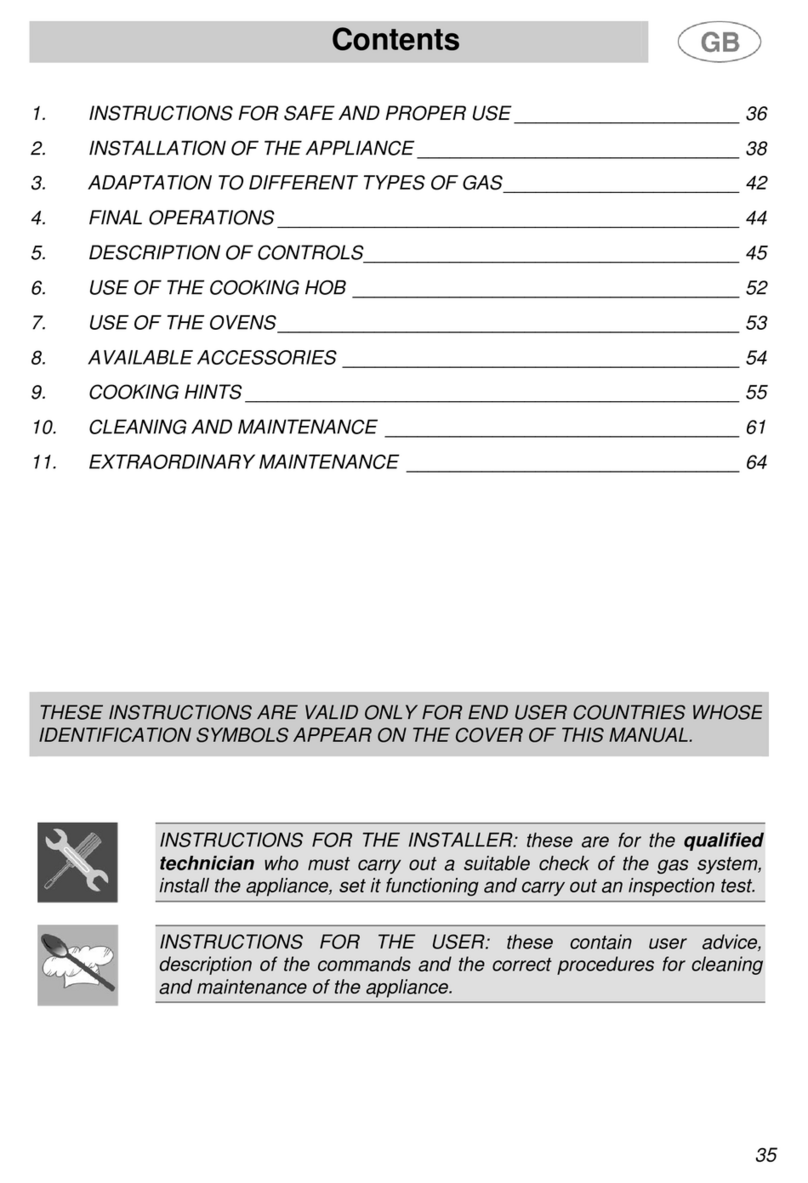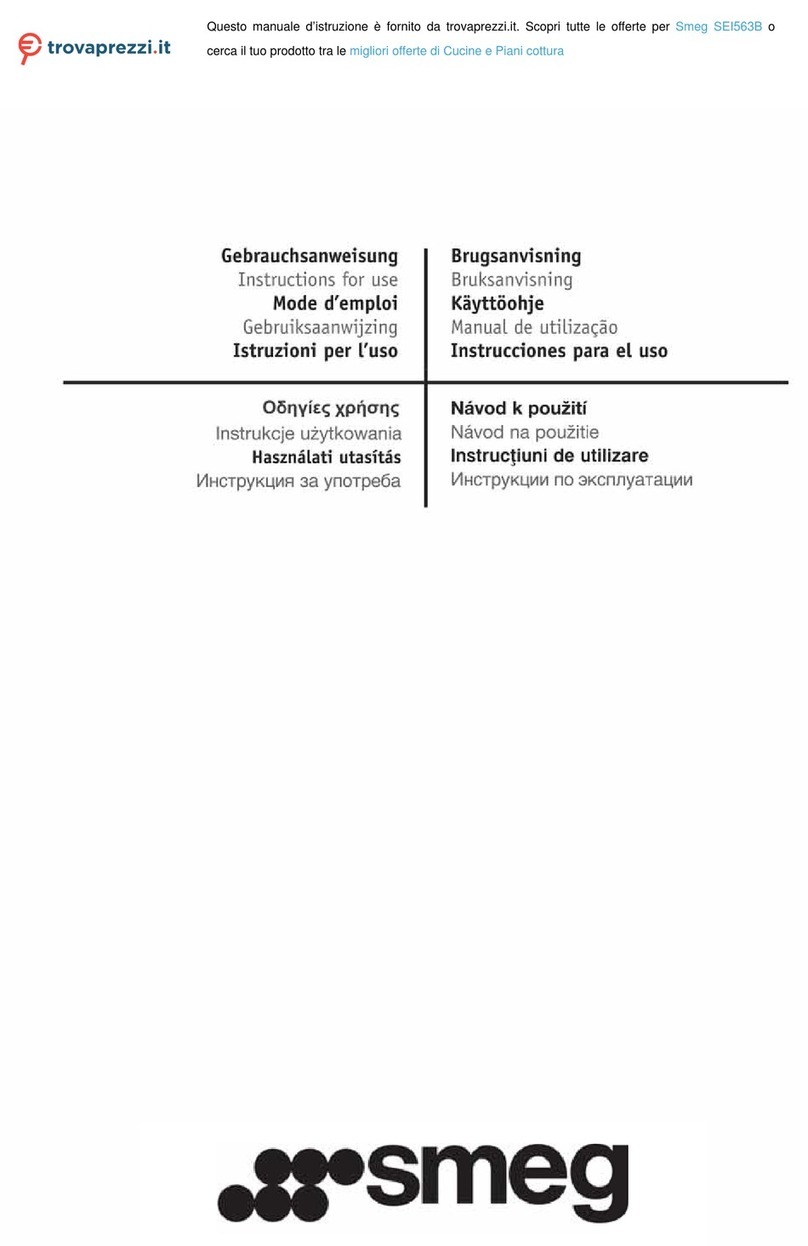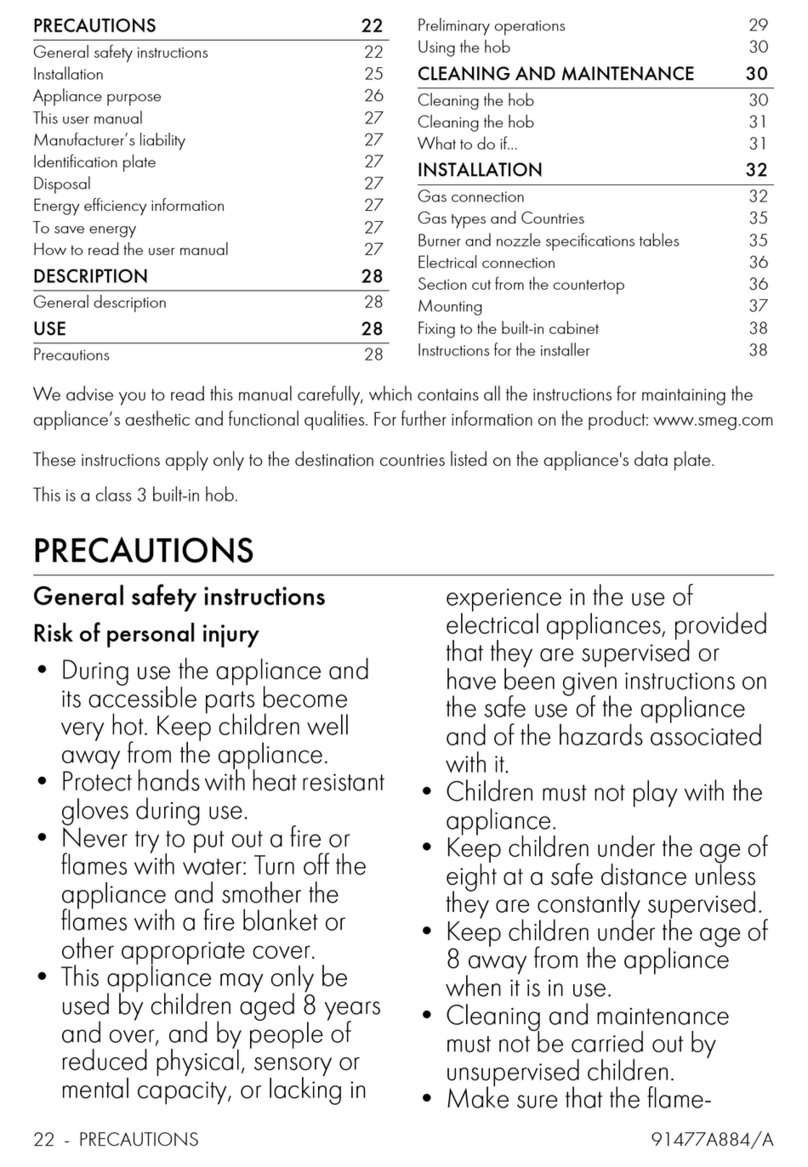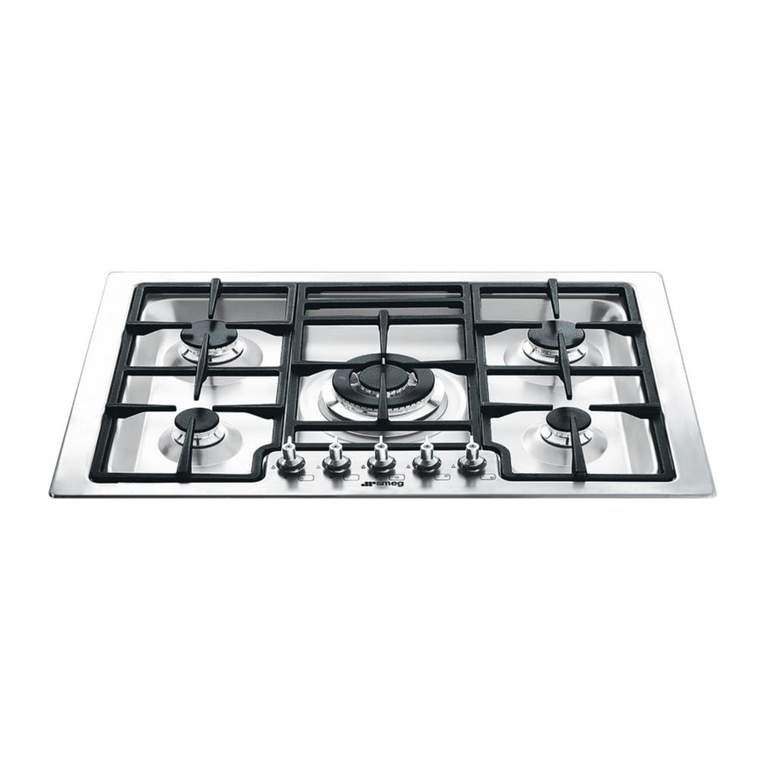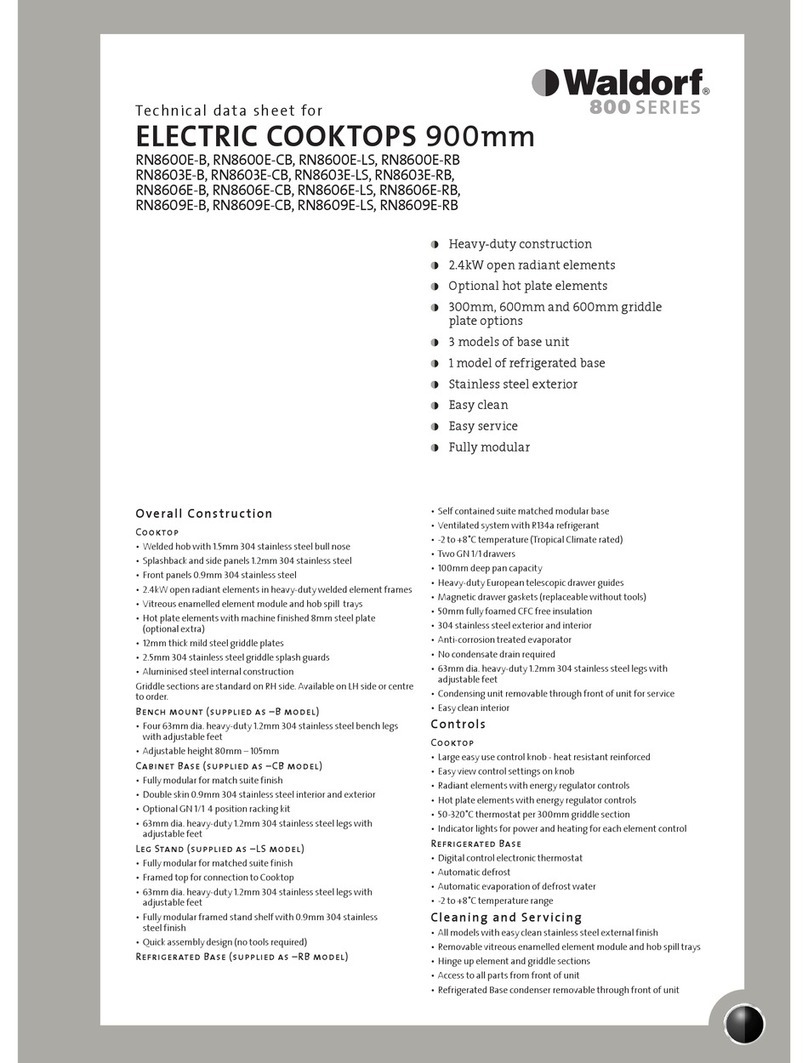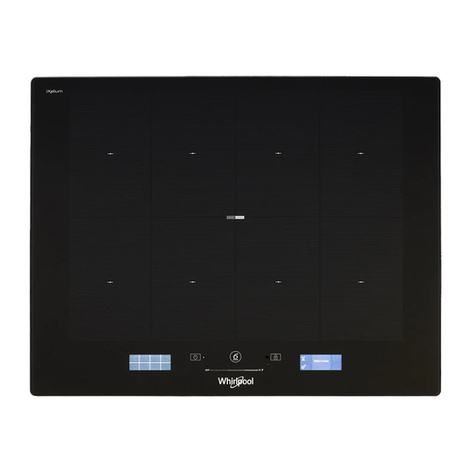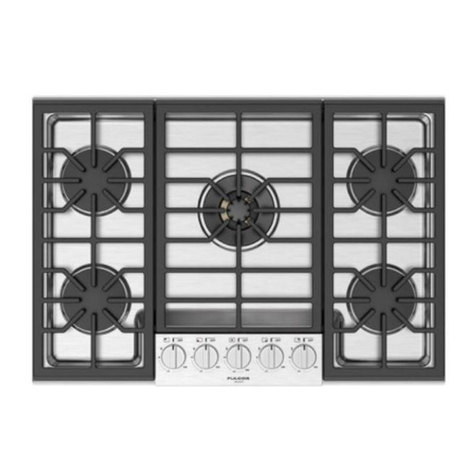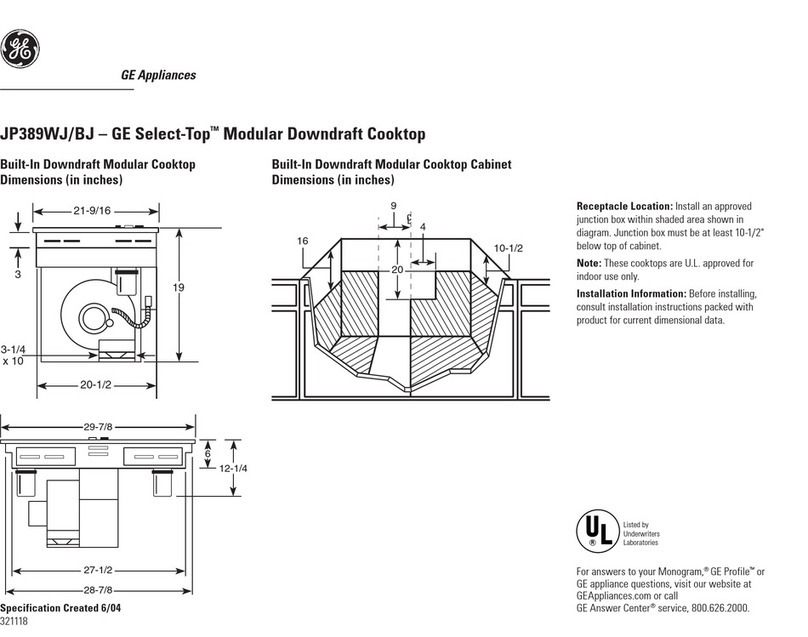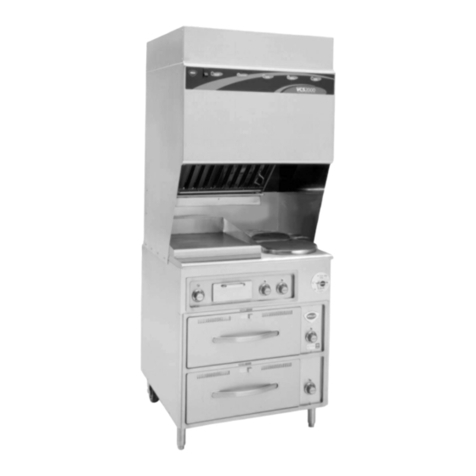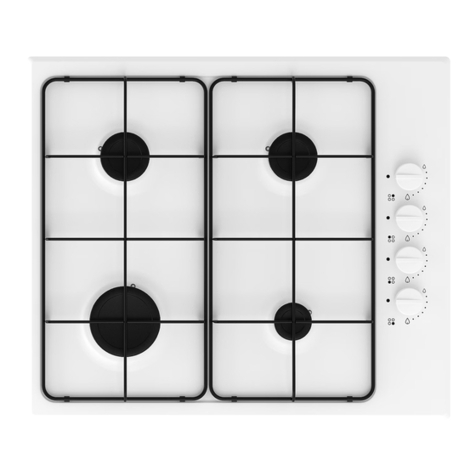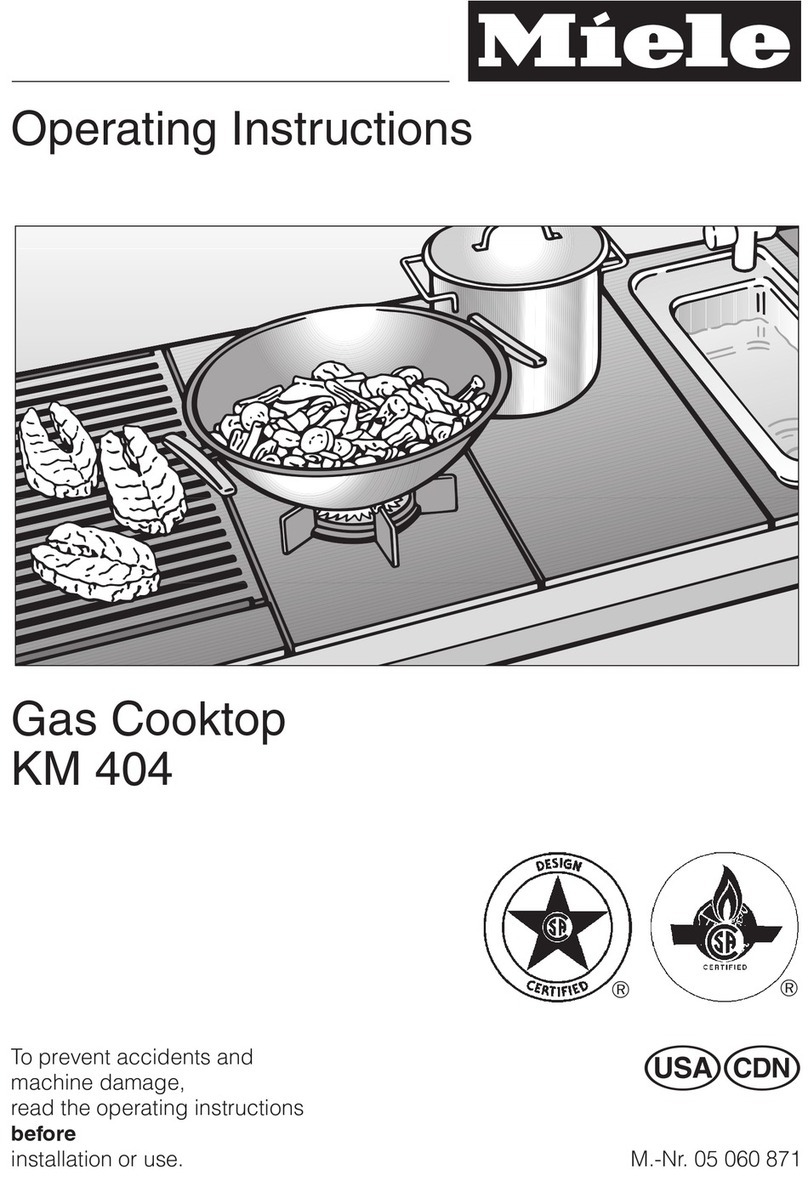Use
15
EN
2 Use
2.1 Instructions
A gas leak can cause an explosion.
If you smell gas or there are faults in the gas
system:
• Immediately turn off the gas supply or
close the valve on the gas cylinder.
• Extinguish all naked flames and
cigarettes.
• Do not turn on power switches or
appliances and do not remove plugs
from power sockets. Do not use phones
or mobile phones inside the building.
• Open the window in order to ventilate
the room.
• Call customer assistance services or your
gas supplier.
Malfunctions
Any of the following indicate a malfunction
and you should contact a service center.
• Yellowing of the burner plate.
• Damage to kitchen utensils.
• The burners do not ignite properly.
• It is difficult to keep the burners lit.
• The burners go out when the appliance
is in use.
• It is difficult to turn the gas valves.
If the appliance does not work properly,
contact your local Authorized Service
Centre.
First use
1. Remove any protective film from the
outside or inside of the appliance,
including accessories.
2. Remove any labels (apart from the
technical data plate) from the
accessories and from the appliance
body.
High temperature
Danger of burns
• Make sure that the flame-spreader
crowns are correctly positioned in their
seats with their respective burner caps.
• Oils and fats could catch fire if
overheated. Be very careful.
• Do not leave the appliance unattended
during cooking operations where fats or
oils could be released.
• Do not spray any spray product near the
appliance.
• Do not touch the appliance’s burners
when it is running. Leave them to cool
before cleaning.
• Keep children under the age of 8 away
from the appliance when it is in use.
Improper use
Risk of damage to surfaces
• Do not use aluminium foil to cover the
burners or hob body.
• Make sure that the flame-spreader
crowns are correctly positioned in their
seats with their respective burner caps.
• Cooking vessels or griddle plates
should be placed inside the perimeter of
the hob.
• All pans must have smooth, flat bottoms.
• If any liquid does boil over or spill,
remove the excess from the hob.
